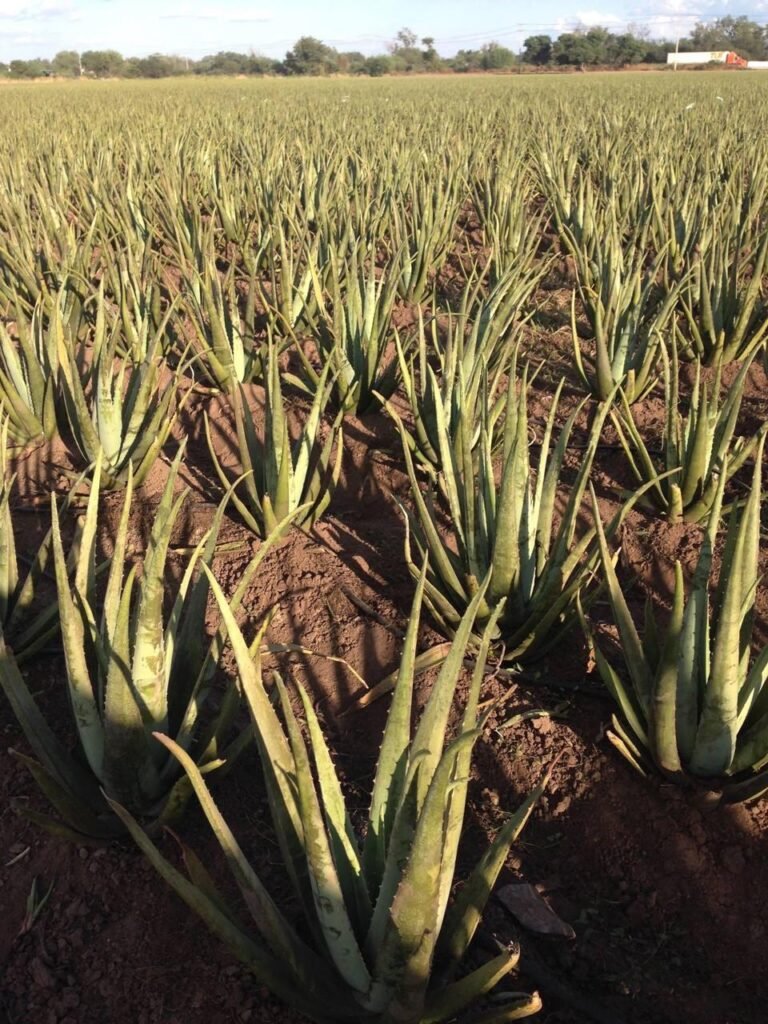Understanding the Polysaccharides in Aloe
Polysaccharides are complex carbohydrates composed of long chains of monosaccharide units linked by glycosidic bonds.
They play crucial roles in various biological processes and are categorized based on their monosaccharide components, molecular structure, and functional properties.
In the context of Aloe vera, polysaccharides are particularly significant due to their diverse health benefits and industrial applications.
The primary polysaccharides found in Aloe vera include acemannan, glucomannan, and pectic substances.
Acemannan is a notable polysaccharide present in Aloe vera. It is a β-(1,4)-linked acetylated mannan, distinguishing itself through its unique molecular composition.
Acemannan is known for its immunomodulatory, antiviral, and wound-healing properties, making it a vital component for therapeutic applications.
The acetyl groups attached to the mannan backbone enhance its bioactivity, contributing to its efficacy in medical and cosmetic industries.
Another significant polysaccharide in Aloe vera is glucomannan, which consists of glucose and mannose units.
Glucomannan’s molecular structure allows it to form a gel-like consistency when hydrated, which is beneficial for its use in dietary supplements and weight management products.
This polysaccharide is also recognized for its ability to improve gut health by promoting the growth of beneficial intestinal microflora, thereby supporting digestive health.
Pectic substances are a group of polysaccharides found in the cell walls of Aloe vera.
These substances include pectins, which are rich in galacturonic acid. Pectins have gelling properties that are exploited in the food industry, particularly in the production of jams and jellies.
Additionally, pectic substances in Aloe vera contribute to its anti-inflammatory and antioxidant activities, enhancing its value in health and wellness products.
The synthesis of these polysaccharides within the aloe plant occurs through complex biochemical pathways. Enzymes catalyze the polymerization of monosaccharides to form the distinct polysaccharides.
Extraction processes, such as cold pressing and solvent extraction, are employed to isolate these valuable compounds from the aloe plant’s inner leaf gel.
Understanding the chemical makeup and properties of these polysaccharides provides a foundation for exploring their multifaceted applications in health and industry.
Health Benefits and Industrial Uses of Aloe Polysaccharides

Aloe polysaccharides have garnered significant attention for their myriad health benefits, making them a focal point of numerous scientific and clinical studies.
One of the most prominent benefits is their ability to boost the immune system. Research indicates that aloe polysaccharides can enhance the activity of macrophages, which are critical cells in the immune system responsible for detecting and destroying pathogens.
Additionally, these polysaccharides have been shown to stimulate the production of cytokines, proteins that regulate the immune response, further bolstering the body’s defense mechanisms.
Another substantial benefit of aloe polysaccharides is their positive impact on skin health. They have been found to promote the proliferation of fibroblasts, the cells responsible for wound healing and collagen production.
This not only accelerates wound healing but also improves skin elasticity and hydration, making aloe polysaccharides a popular ingredient in skincare products.
Anti-inflammatory and antimicrobial properties of these polysaccharides also contribute to their effectiveness in treating various skin conditions, including acne and eczema.
When it comes to digestive health, aloe polysaccharides demonstrate considerable efficacy.
They help in soothing the gastrointestinal tract, reducing symptoms of acid reflux and irritable bowel syndrome (IBS).
The prebiotic effects of these polysaccharides promote the growth of beneficial gut bacteria, enhancing overall digestive health.
Clinical trials have shown that regular consumption of aloe polysaccharides can lead to better nutrient absorption and reduced gastrointestinal discomfort.
Beyond health benefits, aloe polysaccharides have wide-ranging industrial applications.
In the pharmaceutical industry, they are used as bioactive agents in drug formulations due to their therapeutic properties.
In the cosmetic industry, their hydrating and healing properties make them ideal for products aimed at skin repair and moisturization.
The food industry also harnesses the power of aloe polysaccharides, utilizing them as natural stabilizers and emulsifiers to improve the texture and shelf-life of various food products.
Emerging research continues to uncover new potential uses of aloe polysaccharides, such as their role in developing biodegradable materials and enhancing agricultural productivity.
The versatility and importance of aloe polysaccharides in both health and industry underscore their growing significance in scientific research and commercial applications.
For more information on our products please visit the Products pages.